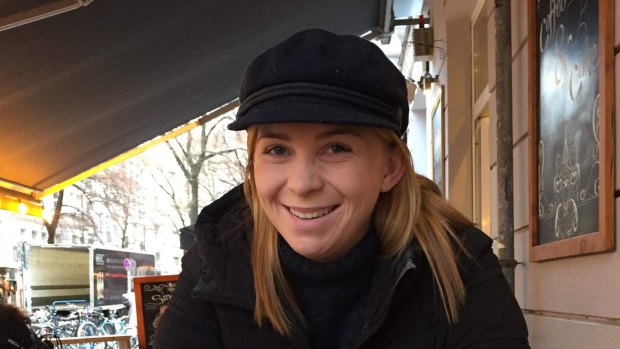This was published 3 years ago
Women ‘take matters into their own hands’ to secure financial future
By John Collett
Alice Davidson has joined the increasing numbers of women investing online, as new figures show that, for the first time, just as many women as men are signing up to online investment platforms.
The marketing and events manager has an account with CommSec – a leading share-trading platform – and has a small nest egg that is spread equally between five exchange-traded funds (ETFs).

Alice Davidson is one of the many younger women who started investing online recently
“It has always been important to me to have my own money and not to rely on others to pay for things,” the 28-year-old Sydneysider says.
Davidson’s plans for the future include buying a house with her partner and, down the track, having children. She also wants to build her savings to help pay for contingencies, such as school fees.
Figures provided by researcher Investment Trends exclusively for Money for International Women’s Day show that women last year made up about one-third of “active” online investors, as defined as those making at least one trade in the previous 12 months.
However, women are joining investing platforms in increasing numbers, with new active investors split evenly for the first time between men and women.
Irene Guiamatsia, head of research at Investment Trends, says younger investors are dominating pandemic-era cohorts of new online investors.
It is encouraging to see gender parity in sign-ups, particularly among younger female investors who trade stocks and ETFs, Guiamatsia says.
“The next generation of women is just as confident as their male counterparts in their ability to take matters into their own hands, and embrace a range of wealth-building mechanisms to secure their financial future,” she says.
Davidson is invested in ETFs as she says they make the “most sense”, as interest rates on savings are so low and ETFs allow her to invest in broad markets, rather than in the shares of specific listed companies.
Units in ETFs are bought and sold on the Australian Securities Exchange, just like shares in companies. Most track particular benchmark indices, and prices of their units rise and fall with the value of the market or sector being tracked.
Figures released by ETF provider BetaShares show the number of women that invested in BetaShares ETFs over the past 12 months surged 90 per cent, taking the total number of women investors to almost 122,000.
Over the same period, the number of men investing in BetaShares ETFs grew by a lesser 59 per cent, swelling their ranks to just over 174,000.
BetaShares says women now make up 41 per cent of investors using its platform, up from 37 per cent a year ago.
“Our data shows that female investors are using ETFs as building blocks for their increasingly sophisticated investment portfolios,” says Alex Vynokur, chief executive of BetaShares.
However, while there has been progress in the personal finances of many women, there remains a number of areas where they still lag, including retirement savings, where women are retiring, on average, with much less than men.
Women spend more time out of the workforce doing unpaid work or caring for children and other family members, says Eva Scheerlinck, chief executive of the Australian Institute of Superannuation Trustees (AIST).
The AIST is calling for superannuation to be extended to government paid-parental leave, with women accounting for more than 90 per cent of all parental leave taken by primary carers.
However, the Morrison government has rejected a plan to add super to taxpayer-funded parental payments. The proposal had been considered by ministers, but the costs to the budget were thought to outweigh the benefits.
Retirement Income Review chair Mike Callaghan had backed the idea, saying it would have only a small benefit but was worth doing.
Analysis from Industry Super Australia found 1.6 million women had taken up the government-funded paid parental leave scheme since it was introduced a decade ago but had missed out on $1.86 billion in super contributions.